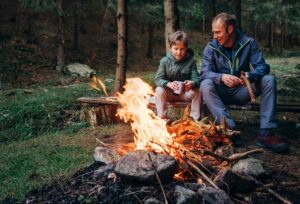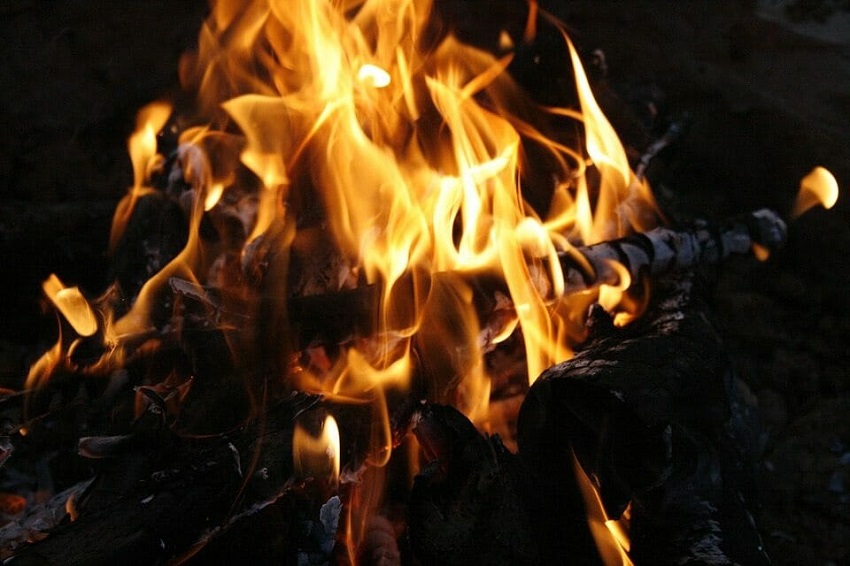In a camp it is important to make a bonfire for three simple reasons: It provides heat, it helps us to cook our food and it keeps the animals away among many other aspects. Now I will give you some practical campfire tips to do it in a very simple way.
You only need
lighter/matches, enough tinder (dry leaves), branches, and stones. The first thing we are going to do is clean the area where you want to light the fire then we start to gather as much tinder as possible, the more we have it will be easier to light it the first time, we give it a round or nest shape and we place very thin branches in it. circular shape, then medium and large branches, until we achieve a construction as in the following image.
Once this is done, you can light the tinder and start blowing it to oxygenate the fire. It is important that around the campfire you place stones to prevent the fire from continuing, but leave a space in the direction of the wind for air to enter and feed the campfire. Always use dry leaves and branches.
Putting out a campfire:
Most fires are caused by leaving a campfire burning, so it is important that you put it out.
1) If there is a river nearby, use this water to turn it off.
2) If there is no river nearby, don’t waste your water. The easiest method is to put enough dirt on top of it so that it stops breathing.
Tips for making a campfire:

Turning it on is only half the battle. How you “build” it can affect how long the fire lasts and how much heat it will give off during that time.
In an emergency, you can leave the fire burning overnight or even longer so you don’t have to relight it later. Collect the ashes and embers in a pile. The loose ash will reduce oxygen access but will retain heat well. The embers will stay at a high temperature and will burn slowly overnight.
If you are in a camping area or some other area for multiple days, store some fuel in a dry area in case it rains.
Never leave a burning fire unsupervised
Separate the burning pieces of wood to cool, wet the fire area with water to cool and suffocate. An unsupervised campfire could inadvertently start a disastrous fire.
To avoid an unwanted second fire
Protect the wood that is near the campfire and that you will use later so that the area of your campfire does not ignite with any spark and place them separately instead of stacking them.
Before starting the fire
Make sure it’s allowed. Most camping areas and some government areas allow only the use of gas or liquid fuel stoves – they do not allow campfires – depending on how hot and dry the particular day is. Sometimes they are not allowed during the day. What did you think of the practical advice to make one?
You may also be interested in 11 Essential Winter Camping Tips You Shouldn’t Forget

Leave a Reply